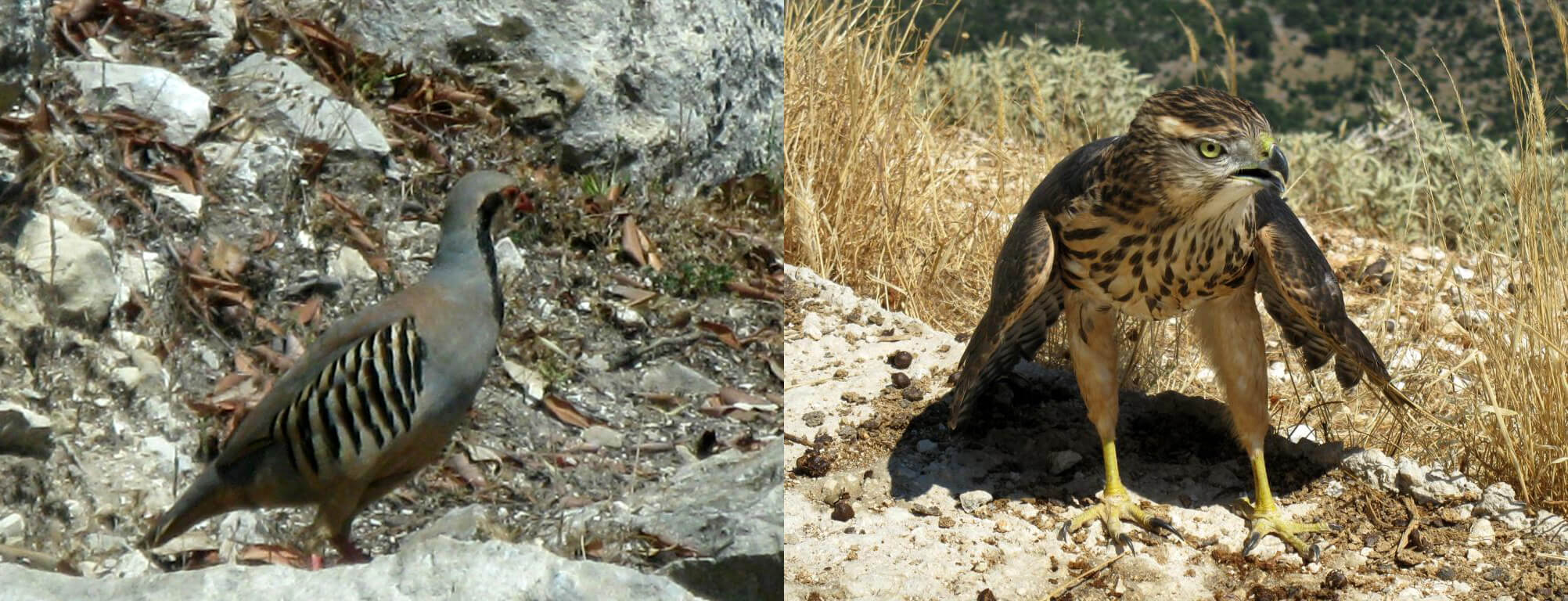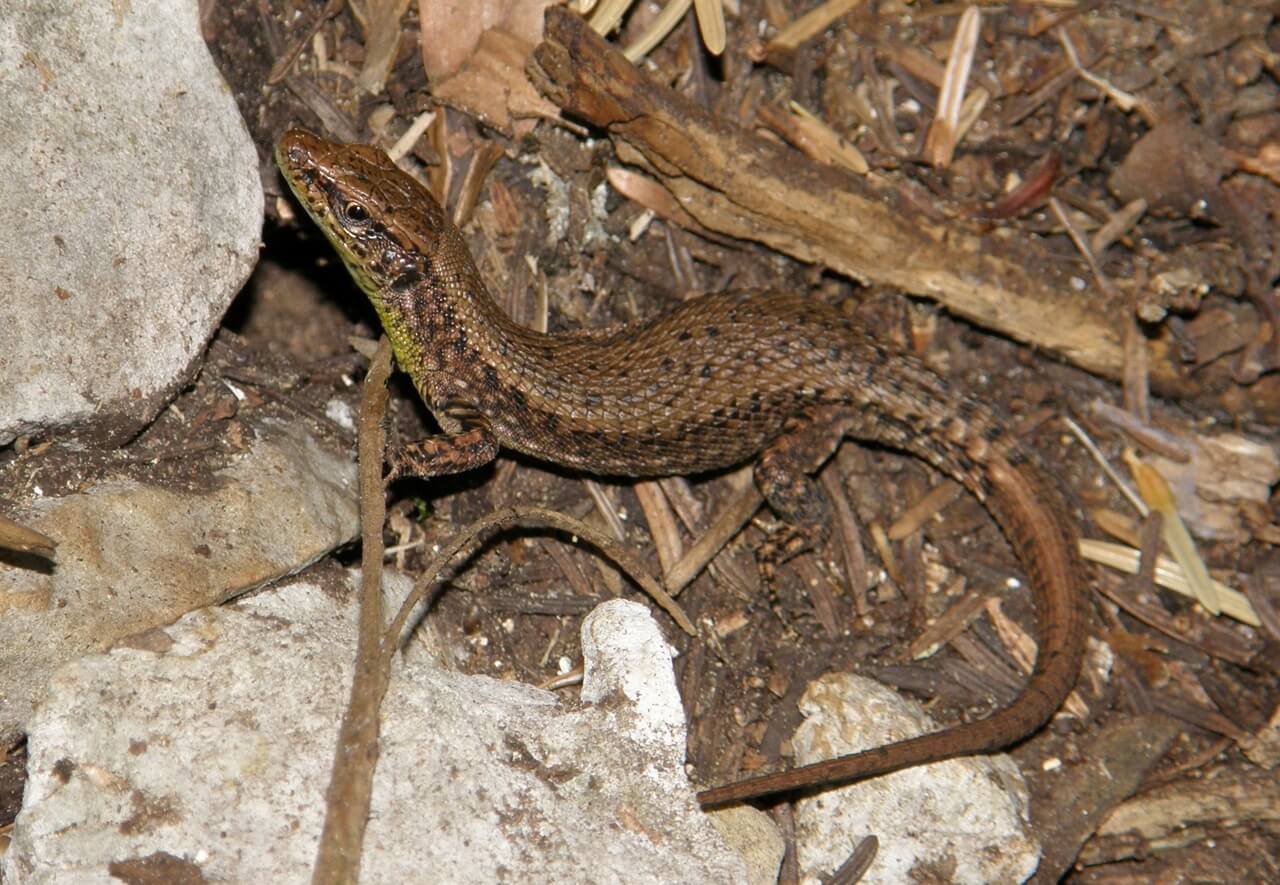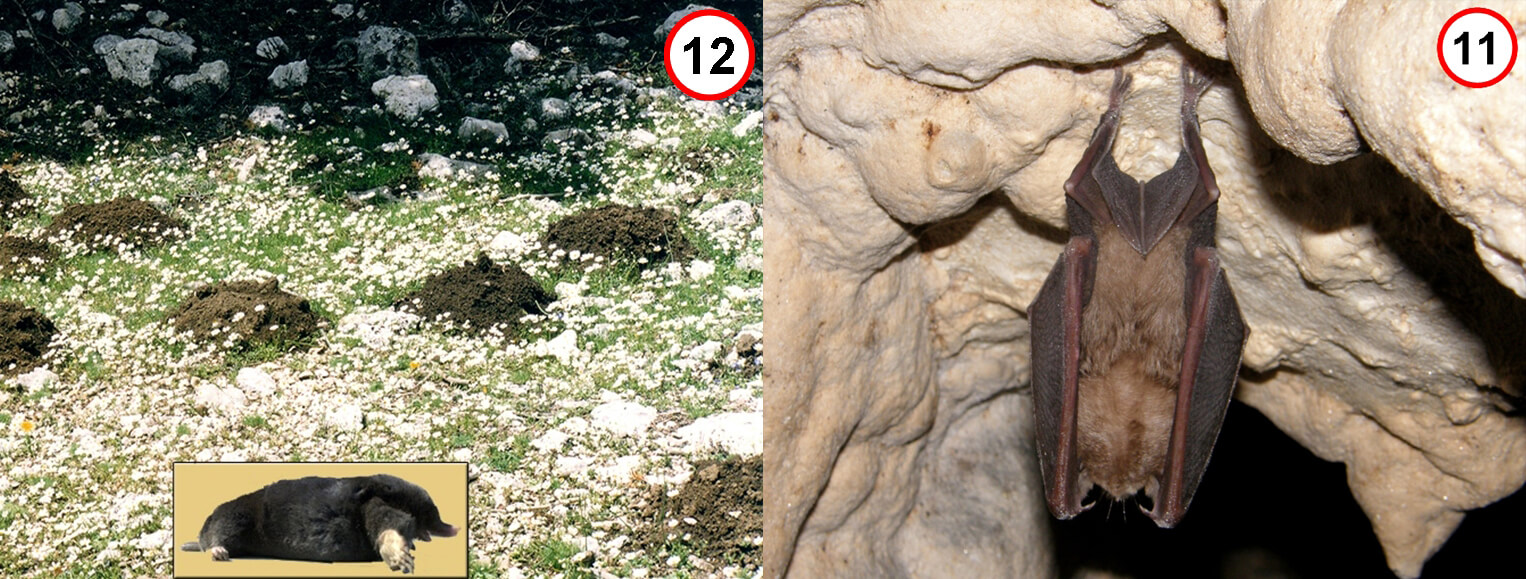Avifauna

More than 100 bird species have been recorded, one third of which are permanent residents of the National Park. The most important of them, as priority species, are the birds of prey Circaetus gallicus (Short-Toed Snake Eagle), Falco biarmicus (Lanner Falcon) and Pernis apivorus (European Honey Buzzard), as well as Alectoris graeca (Rock Partridge - Fig. 1) and Emberiza caesia (Cretzschmar Bunting). Other birds to be encountered are: Buteo buteo (Common Buzzard), Falco tinnunculus (Common Kestrel), Athene noctua (Little Owl), Garullus glandarius (Eurasian Jay), Caprimulgus europaeus (Eurasian Nightjar), Upupa epops (Eurasian Hoopoe), Accipiter gentilis (Northerh hawk-Fig. 1), Turdus sp. (Thrush species), Periparus ater (Coal Tit) etc. The presence of very important species, like Gyps fulvus (Griffon Vulture) and Dryocopus martius (Black Woodpecker) is rather doubtful today.
Amphivians & Reptiles

Due to the lack of the necessary humidity requirements, amphibians are not to notice in the National, perhaps with the exception of Bufo bufo (Common Toad). The reptiles to be found in the National Park during a visit are: Algyroides nigropunctatus subsp. kephallithacius, endemic of Cephalonia and Ithaca, Algyroides moreoticus (Greek Algyroides - Fig. 2), an Ionian and Peloponnesus endemic, Podarcis taurica subsp. ionica (Balkan Wall Lizard), a Balkan endemic, Vipera ammodytes (Viper) etc.
Mammals

The mammalian species that inhabit the National Park, are typical forest ecosystem species: Erinaceus roumanicus (Hedgehog), Apodemus sp. (feral Mice), Myoxus glis (Edible Dormouse), Rhinolophus sp. (Bats - Fig. 3), Martes foina (Stone Marten) etc. It is also likely to come across individuals of Lepus europaeus (Hares). One of the most peculiar mammals of Mt. Ainos is the insectivore Talpa stankovici (Mole - Fig. 3), which lives underground in an extensive network of burrows. It reveals its presence by surface soil mounds.
The National Park lacks large-bodied mammals. An important exception to this is the small herd of relatively short horses, Equus caballus (Fig. 3) that lives freely in semi-wild condition in the wider area of the Monastery of Zoodohos Pigi in the SE slopes of Mt. Ainos.